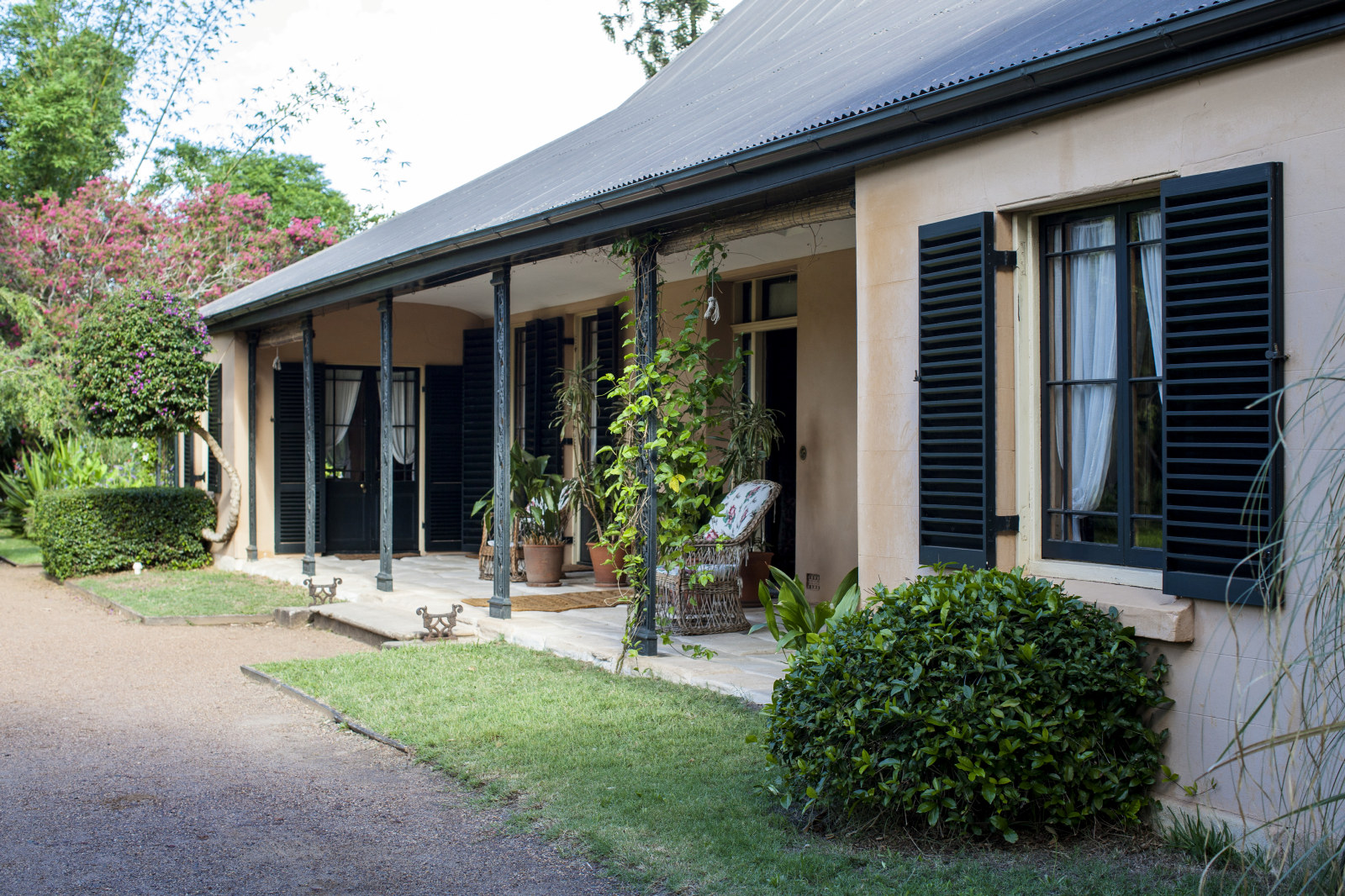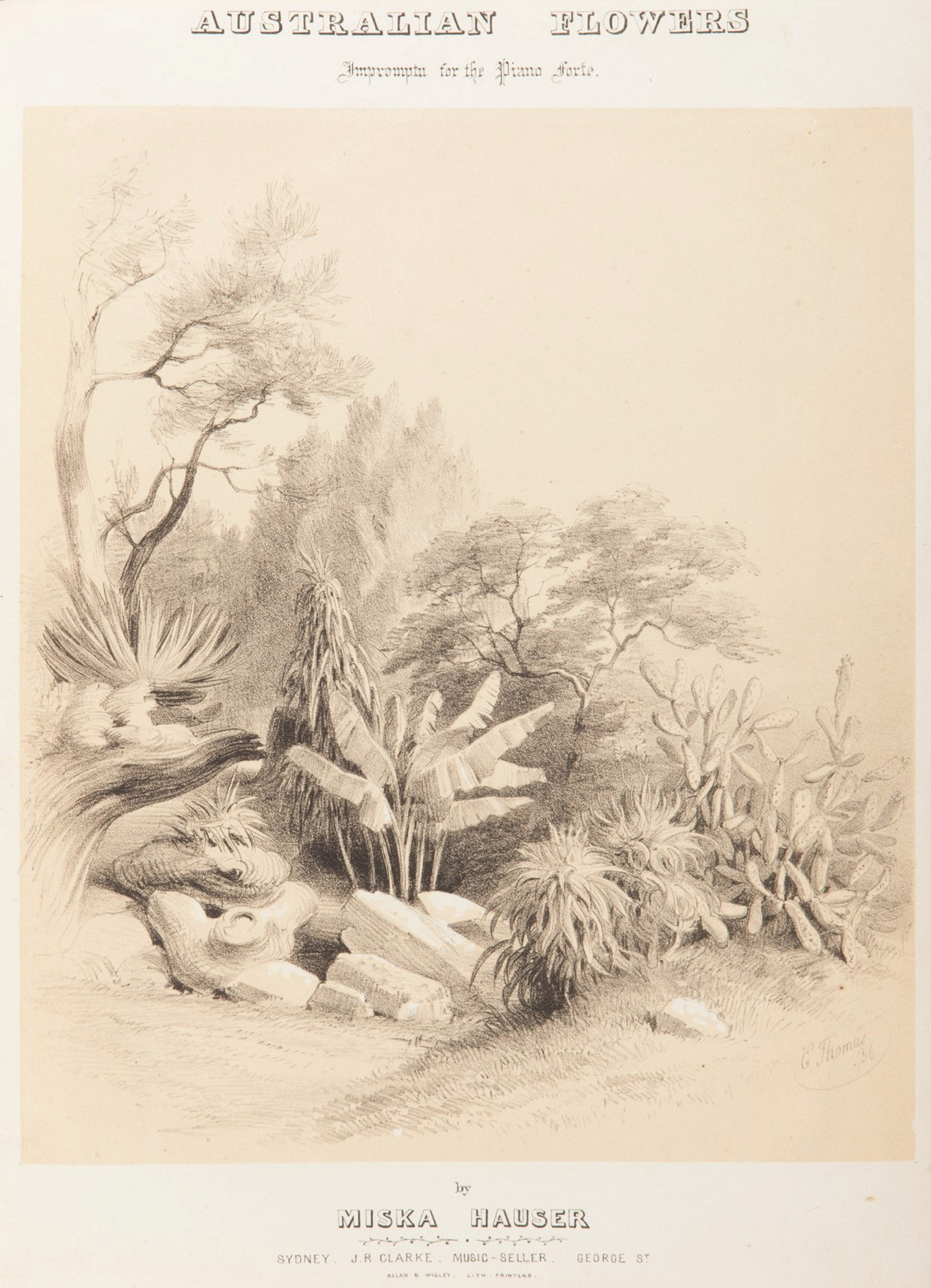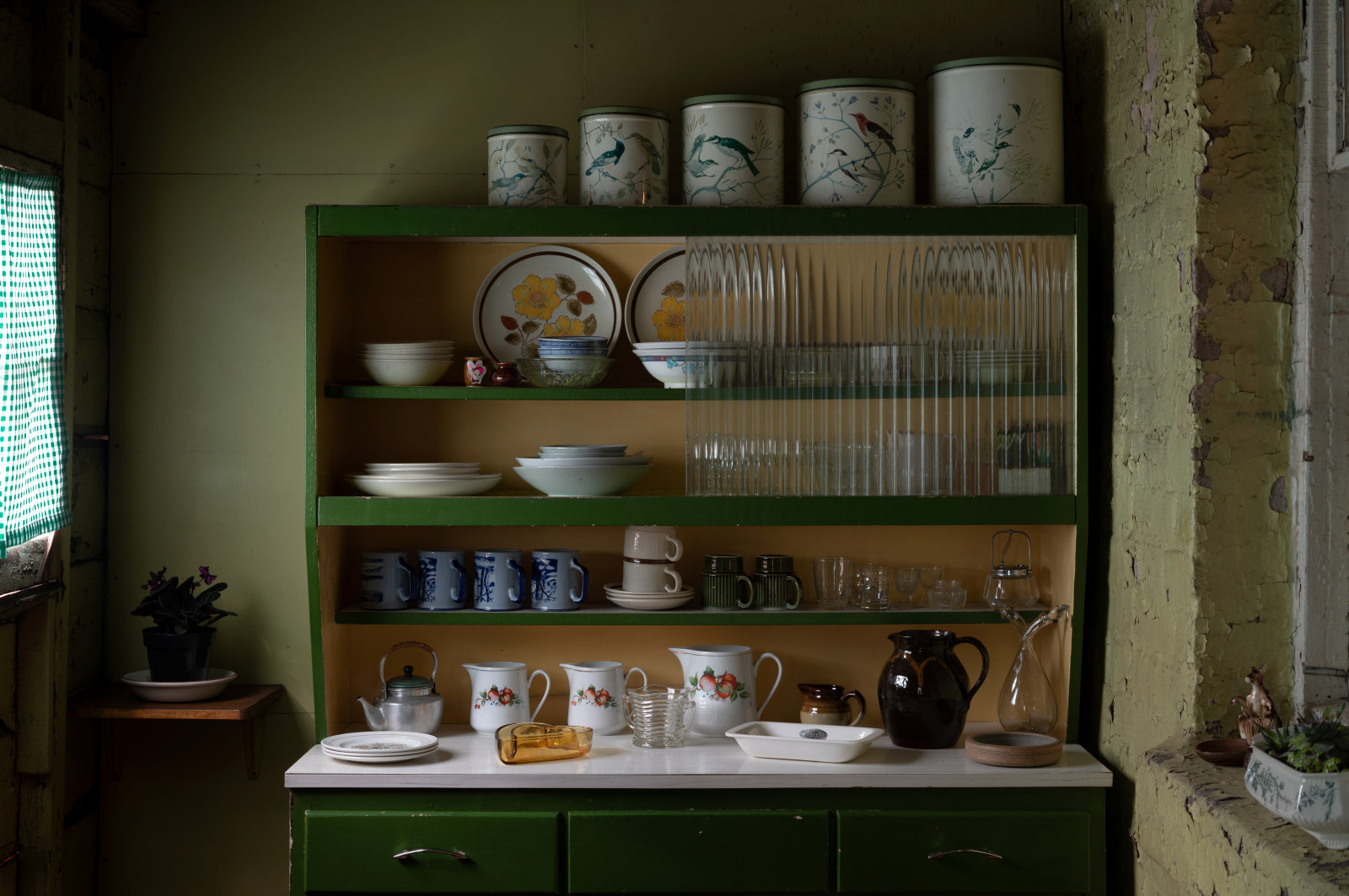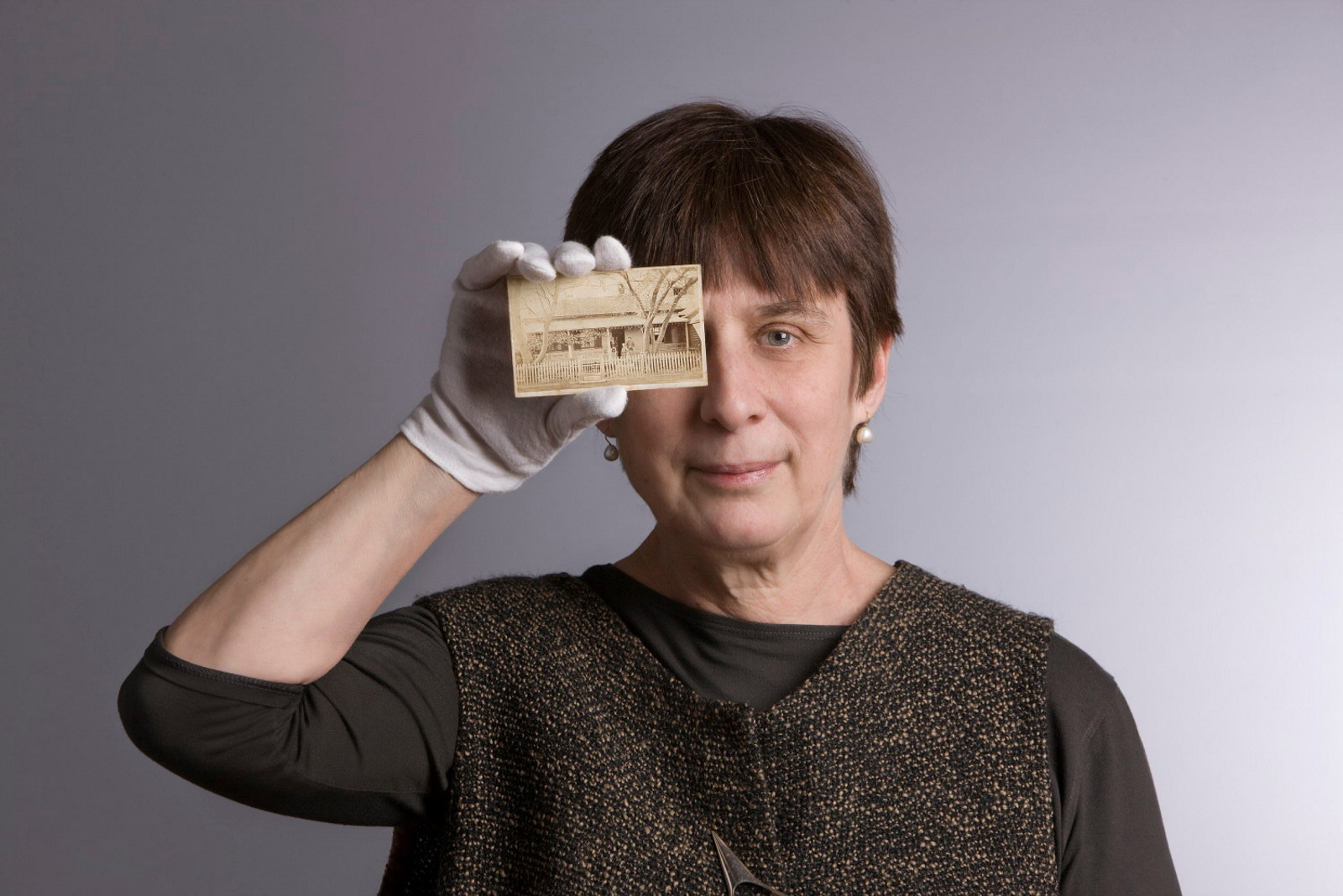Chinese tiles at Vaucluse House
In the collection at Vaucluse House a handful of decorative green glazed perforated tiles, or blocks, survive as orphaned relics of 19th century garden ornament on the estate.
They are large, 32.5 cm square and 4cm in depth, and can be dated to the middle years of the 19th century when such tiles were imported into the Australian colonies in quantity from China. The Melbourne Argus, for example, reported in June 1856 that a recently arrived cargo of Chinese tiles included plain red ones suitable for kitchen and dairy floors and ‘fancy ones’ which were very decorative. The Argus had no doubt that the fancy tiles were likely to be sought after ‘as they may be used with little or no difficulty in a great many ways, and being light and well burnt’ were easy to transport. An example of the architectural use of these fancy tiles can be seen in a house called Potsdam (later Windemere) at Hunters Hill, built in the late 1850s. At Potsdam the tiles were framed in timber and used as supports, balustrade and frieze to the upper verandah of the house.
The Potsdam tiles were very similar to the tiles that survive at Vaucluse House where, judging from the evidence of provided by a 19th century watercolour, an early twentieth century etching and two historical photographs, they were used to make planter boxes in the courtyard and as garden edging.
19th century imports from China
Chinese manufactures were imported into colonial New South Wales from the early days of European settlement. The first lists of cargos from China published in colonial newspapers include chests of tea and bags of sugar, interspersed with occasional parcels of a pale yellowish cloth called nankeen, silk shawls and Chinese cambrics. By the 1820s Sydney merchants were importing cases of lacquered ware - including tea caddies, snuff boxes, writing desks, ladies work boxes and backgammon boards - as well as bamboo window blinds, rolls of matting, camphor wood trunks, silverware and tubs of earthenware.
There were also ceramics, including flower pot stands and barrel or baluster shaped garden stools, often with decorative piercing. Chinese tiles first appear in import lists in the early 1850s: roofing tiles, flowered tiles, red paving tiles and green and white ‘fancy tiles’ for flooring halls, verandahs and bathrooms. The tiles were sometimes large, measuring between 14 and 16 inches square. ‘Chinese porcelain tiles’ featured in a ‘model Australian dwelling house’ built in the 1860s in St Kilda, Melbourne, by an Englishman who had spent many years in India. In the St Kilda house they were used to create a balustrade which provided ventilation in much the same that sets of square perforated glazed tiles were framed together in vernacular building in Shanghai to form window grilles.
The front verandah at Vaucluse House, June 1909
This photograph of the verandah in front of the drawing room of Vaucluse House is one of a series of photographs of Vaucluse House and its estate taken by a photographer from the NSW Government Printing Office at the time the property was acquired by the state government for public recreational use. The land was formally gazetted on 24 August 1911 as a reserve to be known as Vaucluse Park, with a board of trustees appointed to administer the park.
One of the details captured in this photograph, in the lower left of the image, is the use of Chinese tiles as garden edging in front of a bed of narcissus. The tiles have been placed to form a series of truncated diamonds, and some are broken. By the early 1920s the Vaucluse Park trustees had replaced the tiles with irregular stones.
Vaucluse House, 12 September 1874
This watercolour of Vaucluse House was painted by an English clergyman, the Reverend Frederick Leycester Fisher (1841-1921). It is a picturesque view focused on the drawing room verandah of the house and shows, in the lower left of the image, a row of tiles used as garden edging. The shape and location of the tiles as depicted in the watercolour correspond exactly to the Chinese tiles shown in the 1909 Government Printing Office photograph of this corner of the house.
The watercolour is one of 10 pictures known to survive from an Antipodean tour to Australia and New Zealand undertaken by Fisher in 1874-1875. He was a member of a family with long-established connections to India, to the Bengal Ecclesiastical establishment and the Bengal Army on the Fisher side and to the Bengal Civil Service on the Leycester side. He was born in India in 1841, educated in England at the Blackheath School and at Cambridge University and ordained as a Church of England clergyman in 1869. He died in London in 1921 and his obituary in the 'Royston Crow' [Hertfordshire] on 4 November 1921 described him as a man of "somewhat retiring disposition", a "sound scholar, good linguist, and an artist of some considerable talent".
Palm Court, Vaucluse [1922]
'Palm Court, Vaucluse' was one eight pictures exhibited by Australian artist Eirene Mort (1879-1977) at the second annual exhibition of the Australian Painter Etchers Society held in Sydney in June 1922. Mort had shown 34 pictures at the inaugural exhibition of the Society in June 1921, including ‘The Stables, Vaucluse’ and ‘The Stockade, Vaucluse’. In August 1921 she wrote to the Vaucluse Park Trustees seeking permission to make a sketch in the courtyard at Vaucluse House and in November 1921, following a Wentworth Celebration day at the property, she donated two etchings to the Trustees, one of Vaucluse House itself and one of the stables, both of which had been exhibited as part of the celebration. One later engagement with the place resulted in an etching titled 'Stonetubs, Vaucluse' shown at an exhibition of the Australian Painter Etchers Society in November 1929.
Mort’s etching of the ‘Palm court’ shows, in the north-east corner of the courtyard, a large planter box constructed with three tiers of Chinese tiles. The same planter box appeared in a photograph published in December 1913 in the Sunday Times Globe Pictorial, a Sydney newspaper.
Chinese tile planter box in the courtyard at Vaucluse House, c1925
The enclosed courtyard at Vaucluse House was created through two phases of building work by William Charles Wentworth. Changes made to the house in the late 1820s included the construction of a two-storey kitchen wing, linked to the main body of the house by a covered way. In the late 1830s the construction of the stair hall and three-storey bedroom wing enclosed the courtyard.
The planter box shown in this photograph set against the wall of the butler’s pantry in the kitchen wing. Photographs of the other side of the courtyard taken by a photographer from the Government Printing Office in June 1909 show large tubs planted with palms and large planter boxes faced with 19th century Italian tiles. Both the Italian tiles and the Chinese tiles were described in the Sydney press in 1913 as ‘relics of ancient Pompeii’ but only the Italian tiled planter boxes survive in situ today.
Published on
Related
![Owner bound volume of assorted songs, in the collection of Rouse Hill House & Farm, 1850-1864. [music]](https://images.slm.com.au/fotoweb/embed/2023/10/615fb53b45ca4bfb8d979b01993be8c3.jpg)
‘Home! Sweet Home!’
It may come as a surprise that the expression ‘home, sweet home’ originates from a song title

'A most excellent brick house' Elizabeth Farm
Curator Dr Scott Hill explores some of the enduring mysteries buried in the architecture of Australia’s oldest surviving homestead

'Australian Flowers'
Given that much of the music played in Australia in the 19th century had been imported, one might ask what constituted an ‘Australian’ piece of music?

(Re)making a home
An evocative collection of household items belonging to the last tenants of Susannah Place
